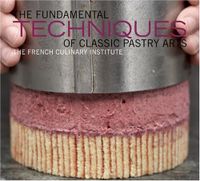Advertisement
Appears in
When making pâte feuilletée, the choice of flour is almost as important as the fat type and quality. It should be high enough in protein to stretch without breaking as the dough bakes and low enough to remain tender and light. A mix of equal amounts of cake and bread flour or a simple all-purpose flour is the recommended choice for successful pâte feuilletée. The addition of an acid, such as cream of tartar, lemon juice, or vinegar, can help the protein in the flour become more elastic and allows the dough to stretch rather than break when being worked. However, if the dough must be refrigerated for a long period of time before baking, adding acid will have the opposite effect and will inhibit rising of the dough.


